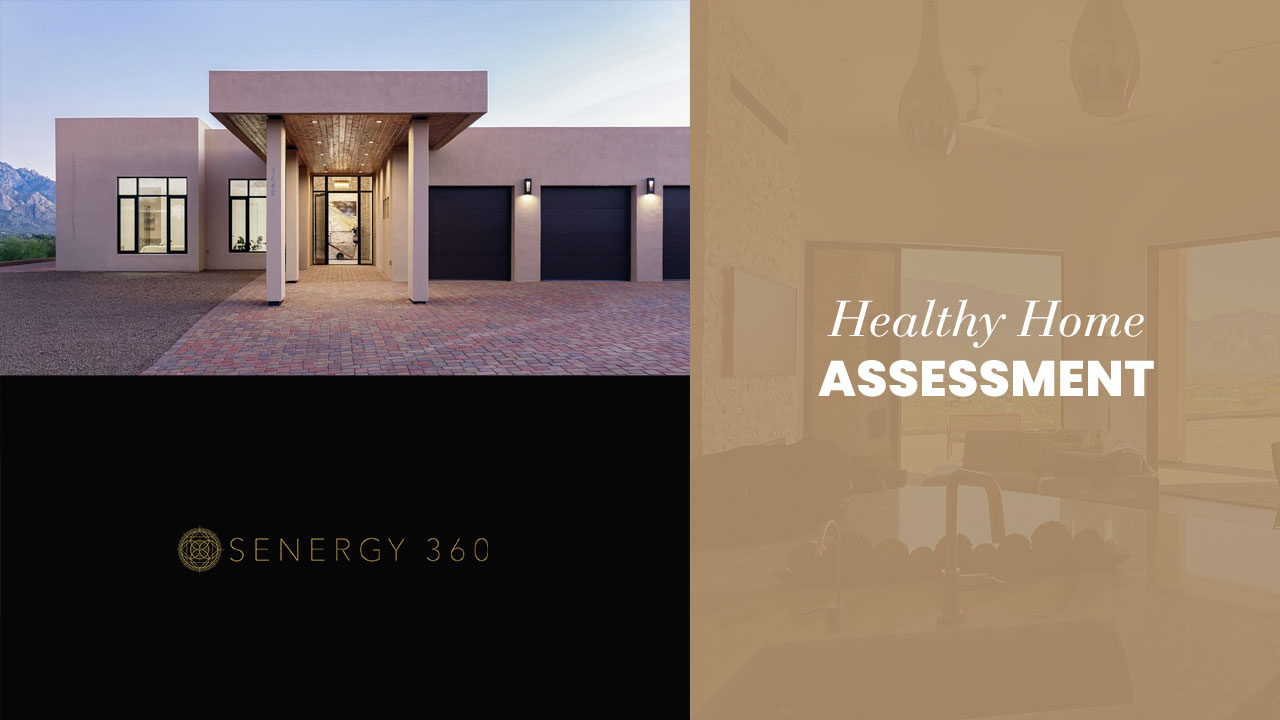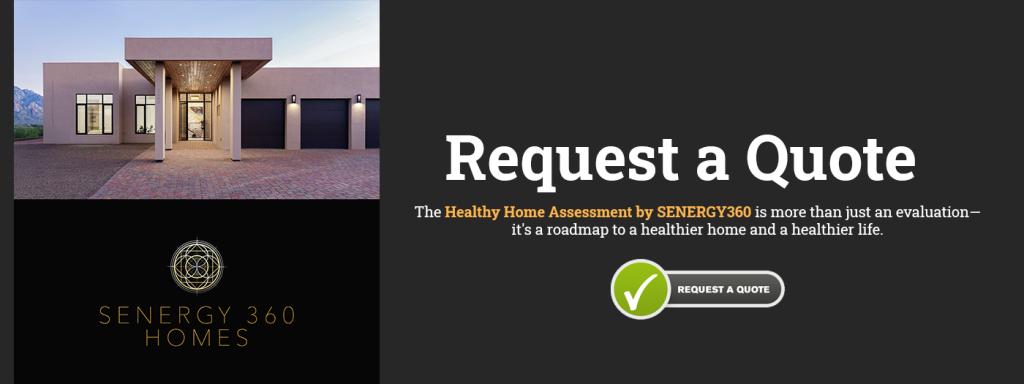Comprehensive Healthy Home Assessment
An Industry-Leading Comprehensive Assessment from SENERGY360, LLC
The Healthy Home Assessment is one of our most popular services. We provide you with the resources and knowledge necessary to create a healthy home environment.
- Our assessments typically take one to two days depending on the complexities,
involvement, and the size of the project. Our on-site assessment provides in-depth insights from a Building Biologist perspective, covering everything from rooftop to foundation. - In our assessment, we conduct basic measurements of on-site EMF conditions and mold sampling, along with indoor air quality (IAQ) measurements, including total volatile organic compounds (TVOC) and formaldehyde.
- The EMR/EMF and Indoor Air Quality (IAQ) aspects within the Healthy Home Assessment scope are presented as an overview only. This part of the assessment helps identify potential short and long-term issues, pinpointing premature failures or anything that may pose potential adverse health effects for our clients. These are opportunitiesfor further review.
- This comprehensive assessment includes recommendations outlined in our Healthy Home Assessment Checklist below (This is a one- time onsite inspection for each project.
- We offer extended support beyond the assessments. Our clients will have the
opportunity to retain our services to provide our exclusive Healthy Protocols and Material Recommendations (HPMR). - For clients just looking for specific inspections we also offer EMRS and Environmental Indoor Air Quality and Mold Assessments separately.
All assessments may require a minimum of two (2) night stay hotel accommodations. Please review travel policy.
Request a Quote
Healthy Home Assessment Checklist:
Attic and Roof Inspection
- Identify type of insulation
- Inspect amount of dust collection
- Inspect for air and water leaks
- Inspect for visible mold
- Assure all vents are secure and venting
- Identify and understand the stack effect
- Inspect all flashings
- Assess window type and design
- Inspect window seals and sealants
Building Structure
- Framing and building components and design
- Flashing details
- Waterproofing / membranes
- Type of insulation
- Window frame transitions
- Exterior walls
- Transition from building to foundation
- Types of siding / cladding
- Drywall and paint
- Foundations on slab or raised
- Wall foundation transitions
- Screeds and sill plates
- Vapor emissions
- Inspect for vapor barriers
- Potential leaks under foundation
- Drainage away from foundations
- Debris and overgrowth against building
- Potential water intrusion in basements and foundation
Electrical and Wiring Systems
- Identify and note electrical panel location
- Smart meters
- Exposures to Electrical fields, AC Magnetic fields and MEP / Dirty electricity
- Inspect and identify wiring systems
- Radio frequency Wi-Fi, 5G, Radio / Cell towers / measure all EMF fields inside and outside environment
- Ensure proper grounding
- Verify all ARC or GFI circuits
- Isolation of potential currents from all utilities
- Hard-wired low voltage wiring for communication
HVAC System Inspection
- Condenser coils
- Ductwork
- Air filters
- Air supply intakes, plenums and registers
- Explaining the differences of UV purification and air filtration
- Passive air flow design windows or mechanical
- ERV, HRV dehumidifier systems
- Explaining importance of static pressure and air balance
- Air leaks from positive or negative pressure
- Assure any intakes are clear from obstructions
Plumbing Systems
- Locate plumbing map
- Inspect plumbing coming into the home
- Check plumbing condition for potential leaks
- Inspect valves and supply lines to all fixtures
- Check all drains for leaks and proper draining
- Check for water treatment and filters
- Filter dates for replacement
- Quick test water quality
Garage
- Visual leaks
- Proper carbon monoxide / dioxide venting
- Storage of gas / solvents
- Amount of dust collection
- Cleaning chemicals
- Mold
- Plumbing, drains
- Drywall and paint
Kitchen
- IAQ, TVOC, Formaldehyde testing
- Mold
- Bacteria
- Cooking pollutants
- Proper hood venting and CFM sizing
- CO2 levels
- Cabinetry
- Water damage
- Sink plumbing
- Drainage
- Drywall, paint
- Water leaks from supply lines or appliances
Living Areas
- IAQ, TVOC, Formaldehyde testing
- Flooring and carpet
- Furniture outgassing
- Ventilation / Air flow
- Note if pets present in environment
- Smell test for mold following mold air sampling
- Fireplace
- Drywall
- Paint
- Radon monitor
Bedrooms
- Measure CO, CO2 TVOC levels
- Bed type and arrangement to electrical (measures ion exchange and body) voltage
- Natural or synthetic materials
- Flooring and carpet inspection
- Air flow and ventilation
- Note if pets present in environment
- Smell test for mold following mold air sampling
- Fireplace
- Drywall
- Paint
Bathrooms:
- Proper mechanical vents
- Mechanical operable windows
- Waterproofing systems
- Smell test for mold following mold air sampling
- Cabinetry inspection
- Plumbing leaks
- Shower and tub tile enclosure mildew, mold draining
- Ventilation
- Type of flooring and condition
- Drywall and paint type and condition for wet areas
- Proper water drains


